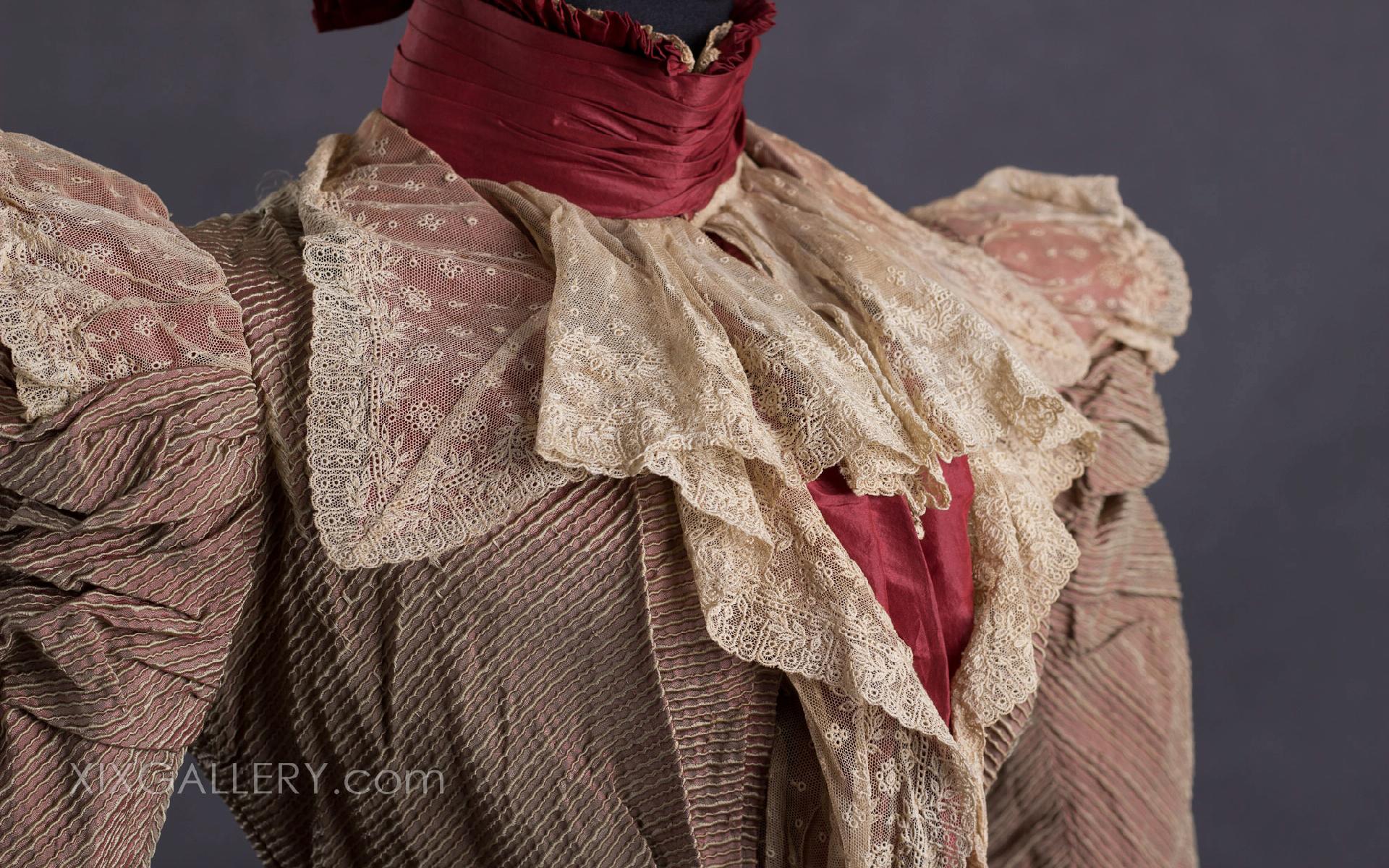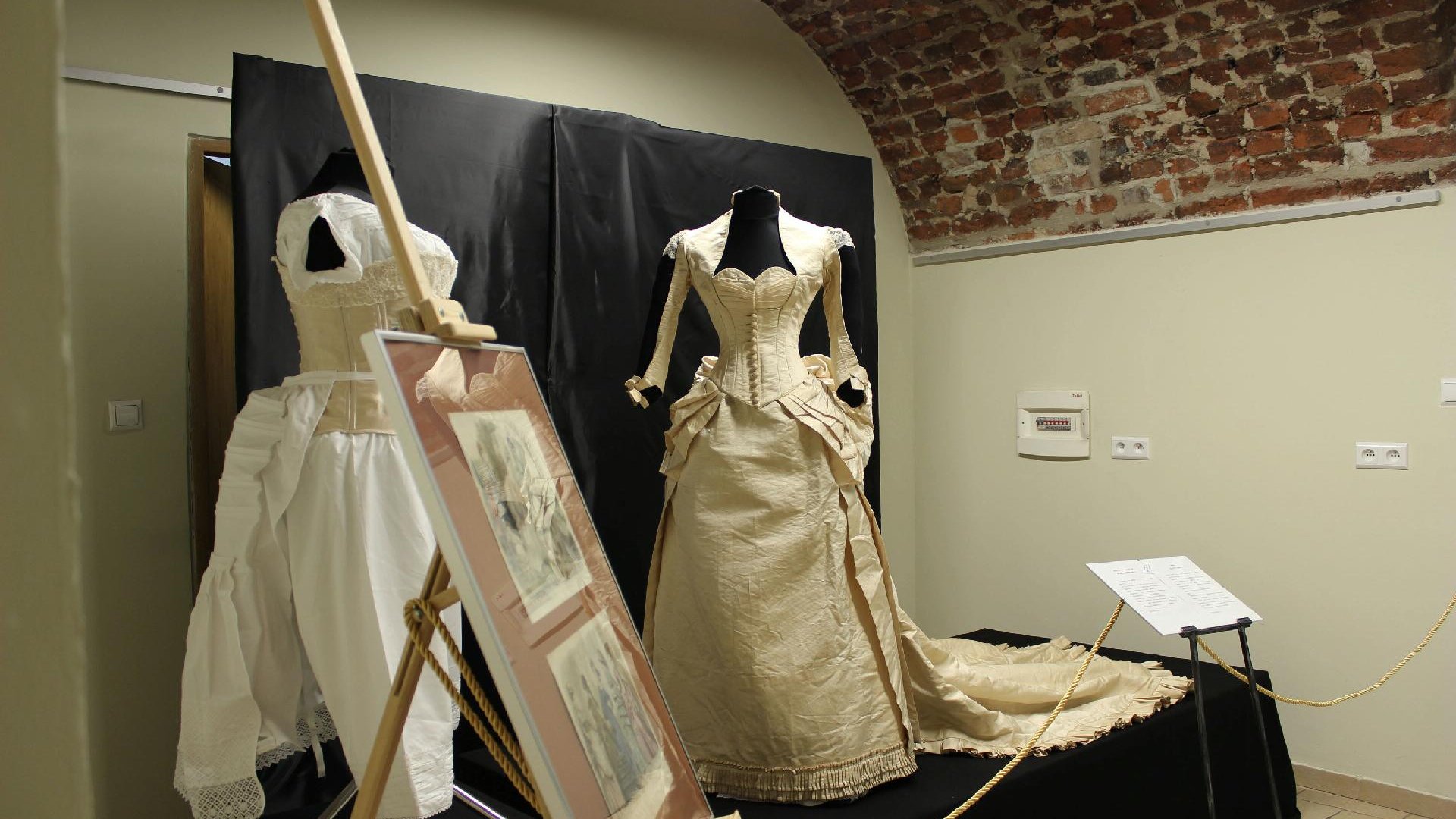Museum made by a curious mind

Your work and passion in life are quite unusual. How did it all begin?
It was many things coming together. Most of all, it was my love for history. Every time I did research, or read a novel featuring a historical event or figure, I found I was missing some information. I didn't know what people's homes looked like, what kind of tables they would have their meals at, and what kind of clothing they wore. This made me curious.
You took a particular liking to the 19th century. Is it from that period that the dress collection that you regularly display at exhibitions comes from?
Yes, nearly all of the dresses in my collection come from the 19th century. That is simply because they are the easiest to get. While 18th-century dresses are also sold, they carry a much higher price tag and are considerably more demanding to maintain. My workshop is not yet prepared to look after them. Buying them is one thing, but then you have to care for them too.
Where do you find the dresses you buy?
They are available online. I started with eBay and historic clothing boutiques. We then moved to bigger auction houses, some of whose costumes are from museum clearance sales. In the United States, such sales are held every year or two. Museums there receive donations of precious items, which their benefactors can deduct from taxes. It is good business.
Do all the dresses in your collection come from the US?
Not all of them, some come from a London auction house.
And what kind of a market do we have in Poland?
We hardly have any to speak of. There is next to no trade in historic dresses in Poland, a simple reason for that being that there are only a few of them out there, and those few are already parts of museum collections.
Your collection comprises 50 items.
It is 50 costumes and some other small items. Most of the latter are magazineswith recipes, tips, and the like, as well as colourful prints and inserts with sewing patterns you can use to make your own dresses.
The collection features mostly original attire with a few items added to fill gaps, such as a dress from 1830. We made it using the fabrics we had available, keeping the size small to match the other exhibits.
Are these the prints you use to reconstruct dresses? I am referring to your historic costume reconstruction workshop you run together with XIXGallery.
Yes, I use these prints and original sewing patterns. This can be challenging, as it's not only that the instructions are in French but they are also quite sparse. My engineering background certainly comes in handy.
How long does it take you to reconstruct a dress?
It depends, you can sew one in two weeks. But to achieve that, you have to work around the clock. Of course, a lot depends on how accurate you want to be. On average, though, a dress takes one to two months to make.
Where do you get the fabrics and accessories you need for your reconstructions?
Finding good fabrics is a challenge, but it can be done. In Poznań, there is a great wholesaler offering different types of silk. When I go there, I rarely walk away without finding what I need. When that does happen, though, I shop online in the Czech Republic or Germany.
Who do you make dresses for?
I get approached by private individuals, as well as museum staff. People like to get married in period costumes.
How do you care for historical dresses?
You have to keep them in dry spaces, at around 20-21ºC. Air humidity must not exceed 60 per cent. And you have to check for insects regularly. Clothes moths devour our wool coats, while the larvae of a little beetle, confusingly called the buffalo moth, like to nibble away at old silk.
Do the dresses you import take much work to reconstruct? Or is it enough to clean them?
I try to get ones that are in good if not excellent shape. They are much more expensive, but require less care. And they look far better on display. I only bought a pig in a poke once. It was a wedding dress with wax orange flowers, typical for the period. It took a ton of work to restore, but the effect was spectacular.
What are we most ignorant about regarding such costumes?
It is important to know that historical costumes should not be touched! Most of them are made of silk and get damaged easily when you rub the fabric in your fingers. Our hands aren't clean enough - it is only years later, though, that the harm becomes evident.
Are the dresses from your collection ever featured in movies?
The historical ones are only used in museum exhibitions. There is this uncool fashion in Poland of buying a historical costume and wearing it to a party. For me, this is sacrilege. These are historical items - they should never be worn, as it only takes wearing them twice to destroy them.
What is the idea behind converting the XIXGallery into a costume museum? And what are we going to see there?
I've decided that the XIXGallery deserves to become a museum. Frankly, it is much easier for a museum to secure funding, say, from the city. I want this museum to be thematic, and for the museum's display and message to go beyond the mere presentation of fashion. I want it to be backed up with information about lifestyles and women's history and status, as the collection is made up of women's costumes. For instance, we want to explain why women wore dresses with long trains... Everything served a purpose and had a good reason behind it. Few people know why there was always a potty under a woman's bed, or why slips had to be starched.
I don't know if we will manage during the first exhibition, but we plan to show a whole set of bridesmaids' dresses from 1841. We will reveal what wedding they were made for and to whom they belonged. Most of the displays will be temporary, although, we still need to prepare the main exhibits. We chose this approach to be able to use more themes.
Anna Moryto - owner of Poland's biggest private collection of 19th-century dresses (XIXGallery), regularly placed on public view. She runs the Stroje z Pasją (Costumes with a Passion) workshop in which she reconstructs historical outfits, mainly from the 19th century but also from earlier periods.
translation: Krzysztof Kotkowski
The Costume History Museum will open on ul. Kwiatowa 14/2 on March 29.
see: The Museum of Historical Costume
© Wydawnictwo Miejskie Posnania 2019
See more

Waltzes, jazz songs and carols

From One Celebration to Another

Christmas Markets and Fairs with Attractions



